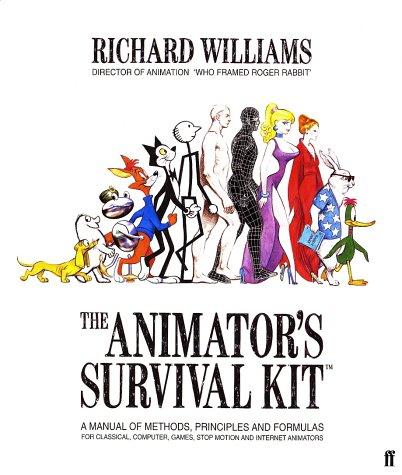
Edwin Hutchins《Cognition in the Wild (Bradford Books)》
书刊介绍
内容简介
Edwin Hutchins combines his background as an anthropologist and an open ocean racing sailor and navigator in this account of how anthropological methods can be combined with cognitive theory to produce a new reading of cognitive science. His theoretical insights are grounded in an extended analysis of ship navigation - its computational basis, its historical roots, its social organization, and the details of its implementation in actual practice aboard large ships. The result is an unusual interdisciplinary approach to cognition in culturally constituted activities outside the laboratory - "in the wild."
Hutchins examines a set of phenomena that have fallen in the cracks between the established disciplines of psychology and anthropology, bringing to light a new set of relationships between culture and cognition. The standard view is that culture affects the cognition of individuals. Hutchins argues instead that cultural activity systems have cognitive properties of their own that are different from the cognitive properties of the individuals who participate in them. Each action for bringing a large naval vessel into port, for example, is informed by culture: the navigation team can be seen as a cognitive and computational system.
Introducing Navy life and work on the bridge, Hutchins makes a clear distinction between the cognitive properties of an individual and the cognitive properties of a system. In striking contrast to the usual laboratory tasks of research in cognitive science, he applies the principal metaphor of cognitive science - cognition as computation (adopting David Marr's paradigm) - to the navigation task. After comparing modern Western navigation with the method practiced in Micronesia, Hutchins explores the computational and cognitive properties of systems that are larger than an individual. He then turns to an analysis of learning or change in the organization of cognitive systems at several scales.
Hutchins's conclusion illustrates the costs of ignoring the cultural nature of cognition, pointing to the ways in which contemporary cognitive science can be transformed by new meanings and interpretations.
A Bradford Book
相关推荐
-

粘土手办基础教程
《粘土手办基础教程》内容简介:有没有想过把绘画书中的经典人物形象做成一个栩栩如生的人物模型收藏起来?其实一点也不难!翻开这
-

《ASP.NET MVC in Action》书籍《ASP.NET MVC in Action》
HIGHLIGHTAninsidersperspectiveontheASP.NETMVCframework,ahighly-anticipatedproduc...
-

C++语言从入门到精通:视频实战版
《C++语言从入门到精通:视频实战版》内容简介:《Visual C++从入门到精通(视频实战版)》详细介绍了使用VC进行C++程序设计的技巧,
-

生活,如此措手不及
《生活,如此措手不及》内容简介:本书收录了十对国际夫妻婚姻的故事括《漫漫岁月 不够人生》《生命的新纪元》《我们就是对方的始终
-

郑纬民《函数程序设计语言--计算机模型、编译技术、系统结构》
郑纬民男,1946年生,浙江宁波人。1970年毕业于清华大学自动控制系并留校任教。1982年在清华大学计算机系获硕士学位。现为清华大
-

《移动基站设备与维护》书籍《移动基站设备与维护》
《移动基站设备与维护》全面、系统地阐述了现代移动基站的基本原理、基本技术和当今广泛使用的各类设备及维护技术规范,较充分地
-
![[美] Randy Allen《现代体系结构的优化编译器》](http://oss.shudanhao.com/caiji/chazidian/2023/69.jpg)
[美] Randy Allen《现代体系结构的优化编译器》
现代体系结构的优化编译器,ISBN:9787111141228,作者:(美)RandyAllen,(美)KenKennedy著;张兆庆等译;张兆庆译目录 第1
-

MATLAB计算机视觉实战
《MATLAB计算机视觉实战》内容简介:本书以MATLAB8.X汉化版为工具,深入浅出地介绍了基于计算机视觉系统工具箱(ComputerVisionSys
-

抄袭检测研究
抄袭检测研究 本书特色 《抄袭检测研究》以文本的抄袭检测为研究对象,探索了抄袭检测的语料库构建、Web环境下的抄袭源检索和高模糊抄袭检测的文本对齐的问题、数据、...
-

急诊急救护理实践手册
《急诊急救护理实践手册》内容简介:本书分为6篇67章,从临床实用角度出发,概括了急诊常见各种急症、急病、创伤等的急救与护理以及
-

动态智力:儿童思维训练家庭解决方案(5-6岁)
《动态智力:儿童思维训练家庭解决方案(5-6岁)》内容简介:教具简单易收纳,两套教具(mathlink+研发棋牌)研发上百种玩法,亲子
-

机器视觉算法与应用
机器视觉算法与应用 本书特色 详述了机器视觉系统的各个组成部分、部件选择和设计要点详述了各种处理算法的原理、特点、适用性、实现及优化方法针对不同行业和应用领域剖...
-

动物直播间:地下城里的迷宫
《动物直播间:地下城里的迷宫》内容简介:本书选择那些以善于建筑巢穴著称的动物作为主人公,让它们用直播的形式自己来述说自己的
-

凯文斯《Jakarta Struts编程》
本书是Struts项目的完全指南,引导开发人员理解概念、设计和实现方式。虽然它由Struts应用程序的基础开始并深入讲解了Model2设计
-

.NETFramework3.5开发技术详解
.NETFramework3.5开发技术详解 本书特色 许多技术人员在面对.NET Framework 3.0/3.5大量的新知识、新技术的时候感到彷徨,对自己...
-

紫色流芳《媚君欢 一品弃妃》
她生性孤傲,才华横溢,风姿天下无人能及。本是万千宠爱集一身的雨天国公主,众男子借以能够见他一面为荣,然她对他们不屑一顾他
-

Tony Morgan《Visual Merchandising》
在线阅读本书Agreatintroductionforretailstudents,thisbookoffersauser-friendlyreferenceg...
-

中国历史人物(英文版)
《中国历史人物(英文版)》内容简介:了解一个国家,必先了解此国的人。在本书中,你将一览中国历史长河,认识曾在哲学、艺术、文
-

当代中国高等教育
《当代中国高等教育》内容简介:教育规划纲要颁布实施以来,高等教育改革的进程如火如荼。那么在改革的过程中我们遇到了哪些矛盾和
-
![[斯洛文尼亚] Miran Lipovaca《Learn You a Haskell for Great Good!》](http://oss.shudanhao.com/caiji/chazidian/2023/3981.jpg)
[斯洛文尼亚] Miran Lipovaca《Learn You a Haskell for Great Good!》
Itsallinthename:LearnYouaHaskellforGreatGood!isahilarious,illustratedguidetothis...





